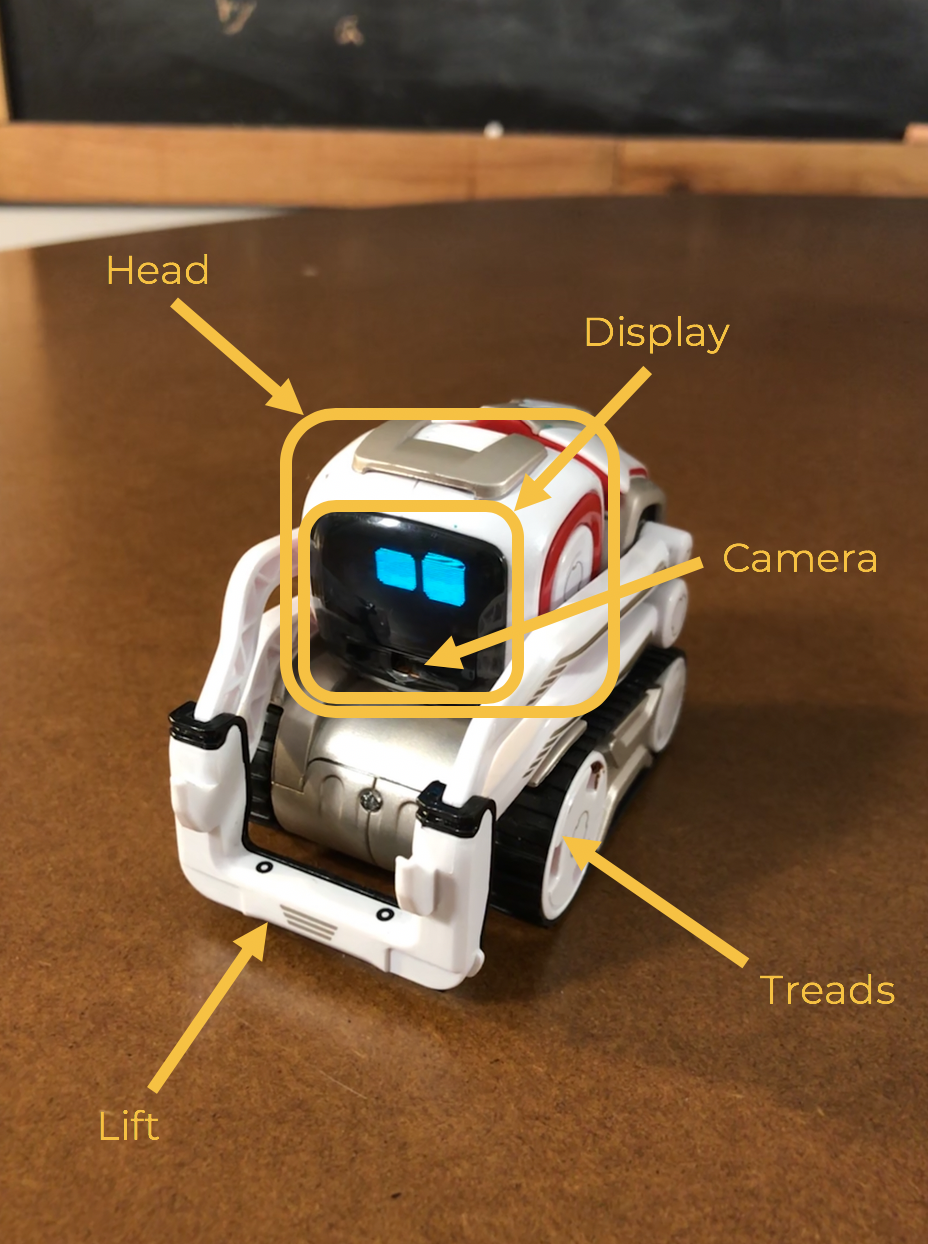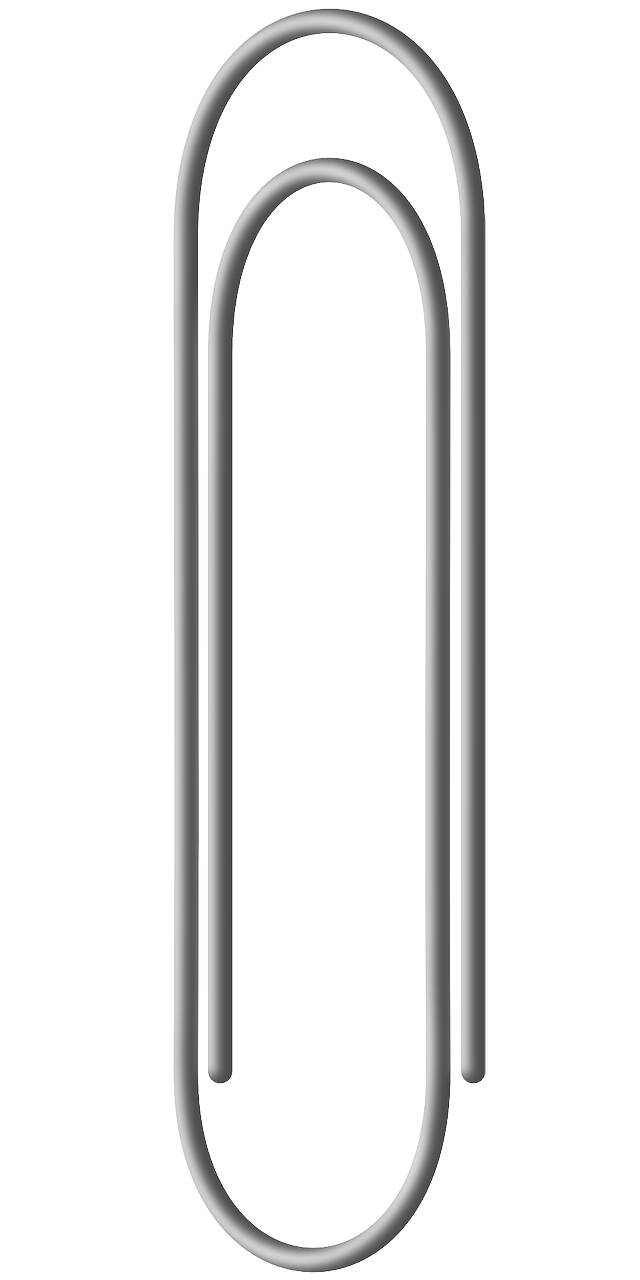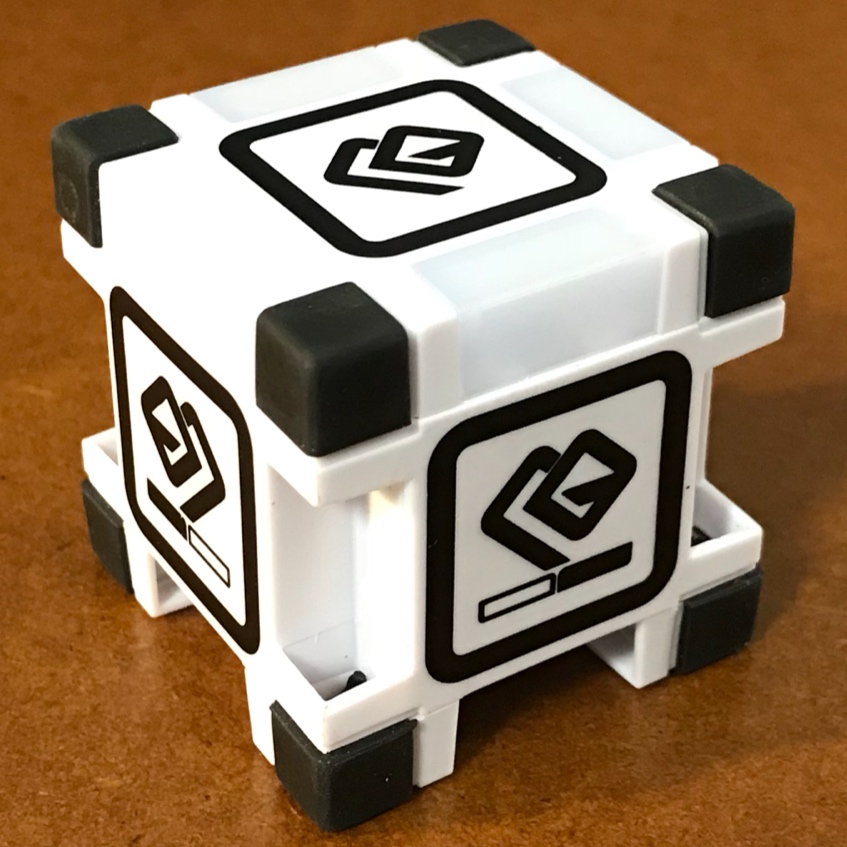Calypso for Cozmo Vocabulary
The Calypso Language
| Term |
Meaning |
| rule | An instruction in the Calypso language.
Rules have a WHEN part and a DO part. |
| tile | A rectangular picture consisting of a graphic icon and a word.
Tiles can be strung together to make rules. |
| NOT decorator | An attachment to a tile that reverses
its meaning, e.g., "NOT-blue" matches any
object that is not blue. |
| predicate | A test that can be true or false. The
first tile in the WHEN part of a rule must be a predicate, such as "see"
or "bumped". |
| condition | A specification of a situation that might
be true, such as "see red cube". A condition begins with a
predicate tile; it may also contain argument tiles. The WHEN
half of a rule expresses a condition. |
| action | Something a character can do. The first tile
in the DO part of a rule must be an action, such as "move" or
"say". It may be followed by argument tiles. |
| argument | A tile attached to a predicate or action
that provides additional information. In the condition "see red
cube", "red" and "cube" are arguments to the "see" predicate.
Similarly, in "move toward it", "toward" and "it" are arguments
to the "move" action. |
| page | Calypso programs are organized into pages
numbered from 1 to 20. Each page contains a list of rules. |
| state machine | A state machine is a way of organizing a complex
program as a collection of
nodes (states) and links (state transitions). In Calypso, each page is
a state, and the "switch to page" action causes a transition to a
new state. |
| score | Scores in Calypso have color names (e.g., the
red score) and serve as variables. They can be used to count things. |
| LOS indicator | Line of Sight indicator. A line on
the world map running from a character (typically Cozmo) to an
object he is seeing, hearing, or feeling. Each rule with a see/hear/feel
tile generates its own LOS indicator. |
| laws | The Laws of Calypso explain how rules work.
There are five major laws, and many minor ones. The First Law is:
"Each rule picks the closest matching object." |
| idioms | An idiom (or "design pattern") is a commonly used
set of instructions that can be found in many programs. Some Calypso idioms have
been collected into a deck of flash cards. The first Calypso idiom
most students learn is "Let Me Drive". |
The Cozmo Robot

| Term |
Meaning |
| head | Cozmo's head contains the display, camera, and speaker. It can tilt up and down. |
| display | The display shows Cozmo's facial expressions. |
| camera | The camera built in to Cozmo's head is what he uses to see the world. It's located at the bottom
of the display, where his mouth would be if he had one. |
| lift | The U-shaped lever that Cozmo can raise or lower to pick up cubes. |
| treads | The rubber tracks, driven by wheels, that Cozmo drives with. |
| charger | The black plastic base that Cozmo rests in to recharge his battery. |
| light cubes | The three plastic cubes that are Cozmo's "toys". They can light up, and also sense
when they are tapped or moved. |
| paperclip | Cube 1. Its marker resembles a paperclip.

 |
| anglepoise lamp | Cube 2. Its marker resembles an Anglepoise lamp.

 |
| deli slicer | Cube 3. Its marker resembles a deli slicer.

 |
The Gamepad Controller

| Term |
Meaning |
| sticks | The left and right sticks (or "joysticks")
are operated with the thumbs and provide smooth directional
input. The left stick can be used to move the pencil or to
drive Cozmo. |
| bumpers | The left and right bumpers (also called
shoulder buttons) lie just above the triggers, and like the
triggers, are operated with the index fingers. |
| shoulder buttons | Another name for the bumpers. |
| triggers | The left and right triggers, located below
the shoulder buttons, are operated with the index fingers. They
are used in the rule editor to cut and paste. |
| A/B/X/Y buttons | The A/B/X/Y buttons are operated with
the right thumb and can serve various functions. The green A button
is used to confirm inputs, like the Enter key on the keyboard. |
| D-pad | Directional pad. The plus-shaped control
below the left stick. The D-pad can be pushed in one of four
directions: up, down, left, or right. It does not blend
directions like the joysticks; it's actually four distinct
buttons. It is used in the rule editor. |
| 'back' button | The 'back' button is a tiny button located
to the left of the large Xbox player button. It is used to start or
stop Calypso programs. |
| 'home' button | The 'home' button is a tiny button
located to the right of the large Xbox player button. It is
used to call up the Home Menu. |
General Robotics
| Term |
Meaning |
| robot | A programmable machine that can sense the
world and carry out actions. |
| perception | The ability to become aware of the world
through the senses, such as sight or hearing. |
| sensor | A device that measures some physical
property such as light, heat, sound, or vibration. |
| actuator | A part of a machine that causes controlled
movement. Cozmo's head, lift, and wheels are moved by actuators
called 'servos', which is short for 'servo motor'. |
| speech recognition | The ability of a computer to understand
spoken words sensed by a microphone. |
| text to speech | Speech generation: the ability of a
computer to turn printed words into a stream of sound with
proper pronunciation and phrasing. |
| computer vision | The ability of a computer to
recognize objects in images, typically coming from a video
camera. These might include objects (such as the light cubes),
faces, or custom markers. |
| face recognition | The ability to recognize specific
faces in an image. This is more a difficult problem than 'face
detection', which doesn't distinguish between different
faces. |
| field of view | The area in front of a camera that is
visible to the camera. Field of view is often measured in
degrees. For a robot or webcam a typical horizontal field of
view is about 60 degrees. |
| marker | A distinctive pattern that can be recognized
by computer vision. The designs on Cozmo's light cubes are
markers, as are the custom markers that come on adhesive
stickers, and the ArUco markers on the walls in Cozmo's
clubhouse. QR codes, and the UPC symbols printed on
merchandise, are also markers. |
| teleoperation | Remote operation of a robot or device by a human.
Compare with 'autonomy'.
Cozmo can be teleoperated with the game controller if the program includes
the Let Me Drive idiom. |
| autonomy | The ability to operate independently,
without human intervention. Self-driving cars are autonomous
vehicles. Cozmo can operate autonomously if he has rules that
tell him what to do and we're not overriding them with the
gamepad. |
Back to the curriculum page
|







